Varnish leather, also known as mirror leather, polished leather, or high-gloss leather, is a type of leather with an extremely smooth, shiny, and reflective surface, resembling a mirror.
Its core characteristic is its high-gloss, mirror-like surface coating, achieved through a specialized processing technique.
Varnish leather is a man-made leather with an extremely high gloss finish. Its applications are wide-ranging, primarily in the following areas:
Luggage and Bags
Varnish leather is commonly used in luggage. Its smooth surface and unique sheen lend it a premium and stylish appearance. It also offers excellent wear resistance and easy cleaning, ensuring it maintains its beauty over time.
Shoes
Varnish leather is used as the upper material for footwear, lending it a sleek and stylish appearance. Its water-resistant and easy-care properties also enhance its practicality.
Clothing
Varnish leather can be used in clothing such as jackets and skirts. Its unique sheen and texture add a fashionable and avant-garde touch to clothing, making it popular with consumers who value individuality and style. Furniture Decoration
In the furniture industry, Varnish leather can be used for surface decoration on sofas, chairs, and other furniture, enhancing their quality and aesthetics. Its wear- and stain-resistant properties also make it suitable for daily use.
Electronic Product Packaging
Varnish leather can be used in electronic product packaging, such as computer bags and phone cases. It not only protects the electronics but also gives them a high-end, refined appearance, enhancing their overall quality.
Automotive Interiors
In the automotive industry, Varnish leather can be used for interior components such as car seats and steering wheels. Its high gloss and pleasant tactile feel enhance the luxury and comfort of the vehicle interior.
In summary, Varnish leather, with its unique gloss and excellent properties, is widely used in various fields, meeting people's demand for beauty, practicality, and fashion.
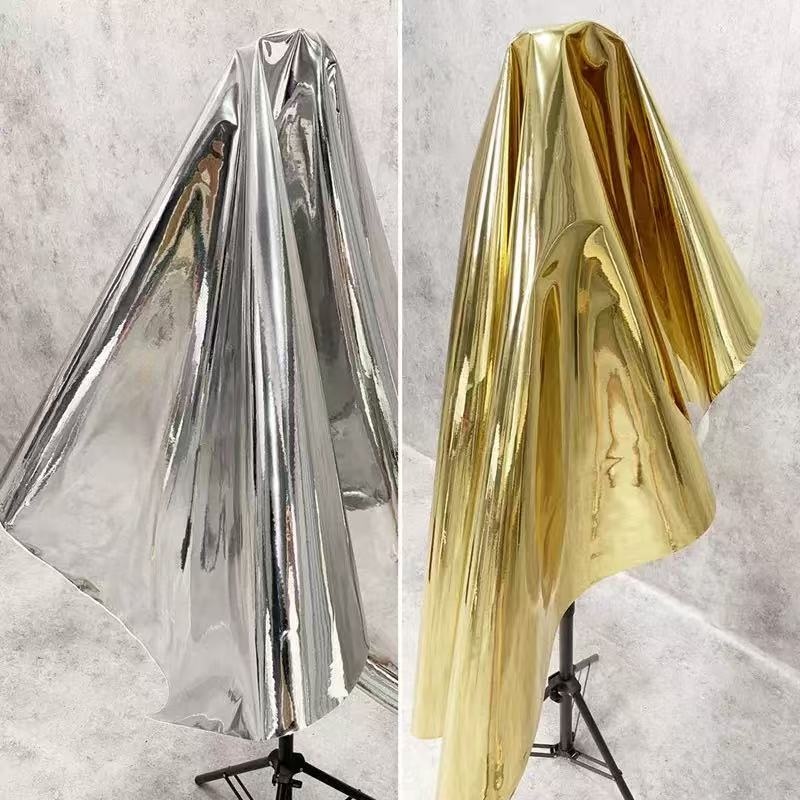
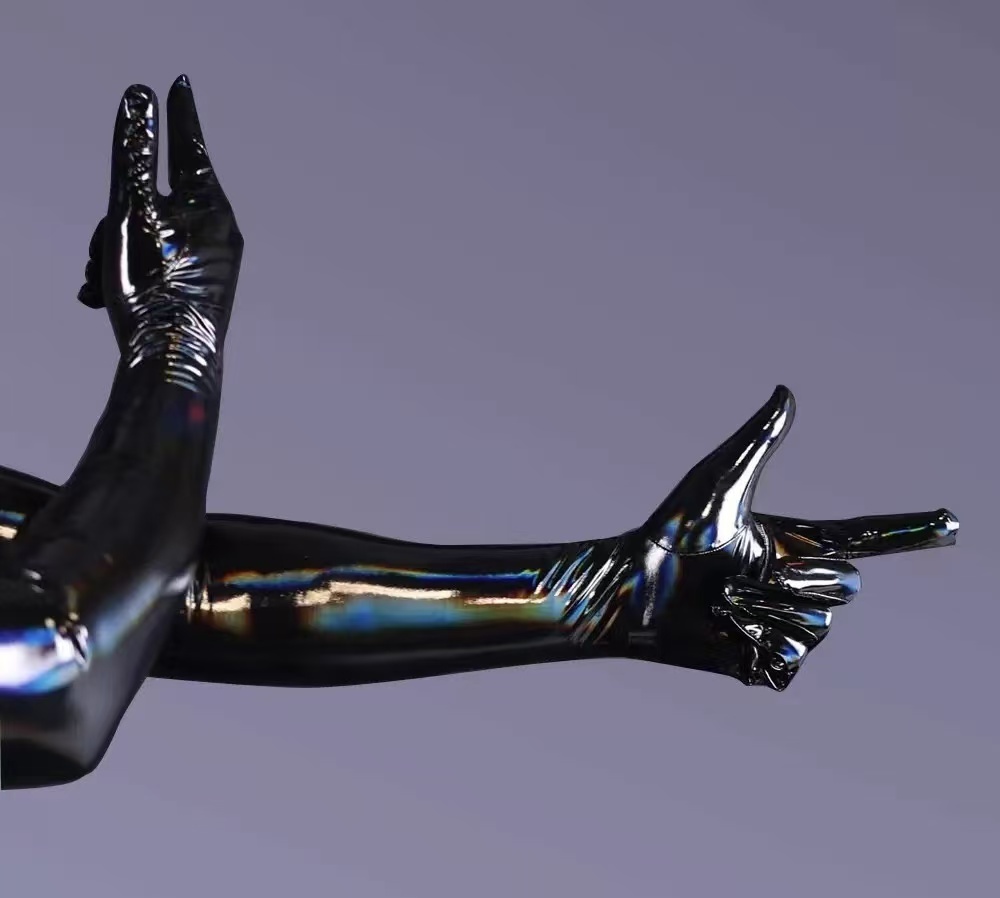
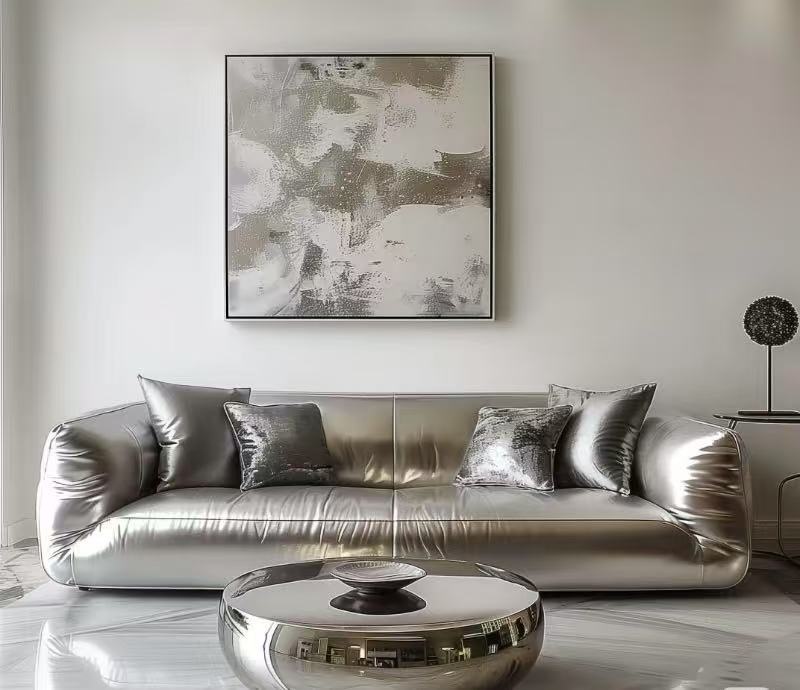
The production process of Varnish leather is the core of achieving its high gloss surface, and its advantages are directly derived from this specialized process and material structure. The following is a detailed analysis:
1. Varnish Leather Production Process (Core Steps)
Varnish leather manufacturing is a sophisticated, multi-stage process, centered around coating application and high-temperature, high-pressure polishing:
1. Substrate Selection and Pretreatment:
Select high-quality, smooth-grained genuine leather, such as top-grain cowhide (most common) or sheepskin, with minimal blemishes.
The leather undergoes routine treatments, including cleaning, tanning, and dyeing, to ensure a stable and uniform substrate.
2. Multi-Coating Application (Critical):
Primer: Spray or roller-apply a filler resin (such as polyurethane) to penetrate the leather's pores, seal the surface, and create a smooth base.
Mid-Coat/Color Coat: Apply a layer of pigmented resin (usually also polyurethane or acrylic) to impart color and hiding power. The application must be uniform.
High-Gloss Topcoat (Core Layer): Apply a special high-gloss, high-leveling resin (usually modified polyurethane or a special acrylic). This resin layer must inherently possess the potential to create a mirror effect. Coating thickness and uniformity are crucial. Curing: Each coat requires drying and cross-linking under controlled conditions (temperature and humidity).
3. High-Temperature and High-Pressure Polishing (the key step):
Polishing Equipment: Use a high-speed rotating, high-quality fiberglass polishing wheel or stainless steel polishing wheel/plate.
Polishing Process:
The surface resin layer is softened at high temperatures (typically around 100°C - 150°C).
Extreme pressure (tens to hundreds of tons) is applied, pressing the leather against the high-speed rotating polishing wheel or smooth polishing plate/belt.
This process involves repeated (potentially dozens of times) friction, compression, and ironing.
How it works: High temperatures soften the resin into a molten state, while high pressure and friction iron the surface to an extremely smooth, molecular level. Microscopic bumps and irregularities are completely filled, resulting in an optically smooth surface and a strong, mirror-like reflection. Precise control of the number of polishing strokes, temperature, pressure, and speed determines the final gloss and uniformity. 4. Cooling and Shaping:
After polishing, the leather must be cooled rapidly to allow the high-gloss resin layer to harden and set, locking in the mirror effect.
Final inspection, cutting, and other subsequent processes may be performed.
Core Process Summary: High-quality substrate + multiple layers of precision coating (especially the high-gloss topcoat) + rigorous high-temperature and high-pressure mechanical polishing. The polishing process is the key difference from ordinary glossy leather (such as patent leather) and is the decisive step in creating the mirror effect.

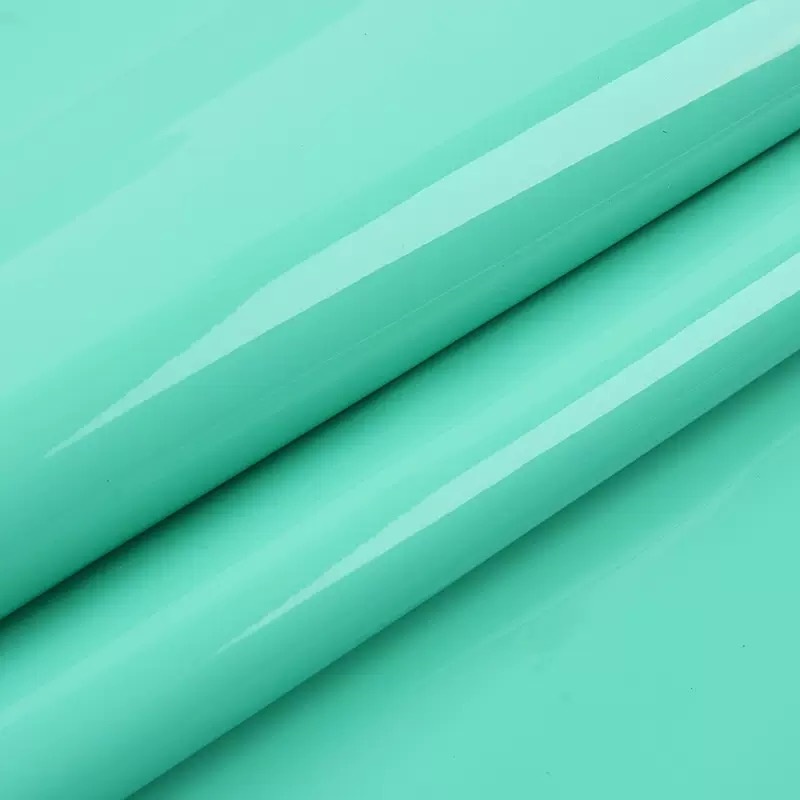
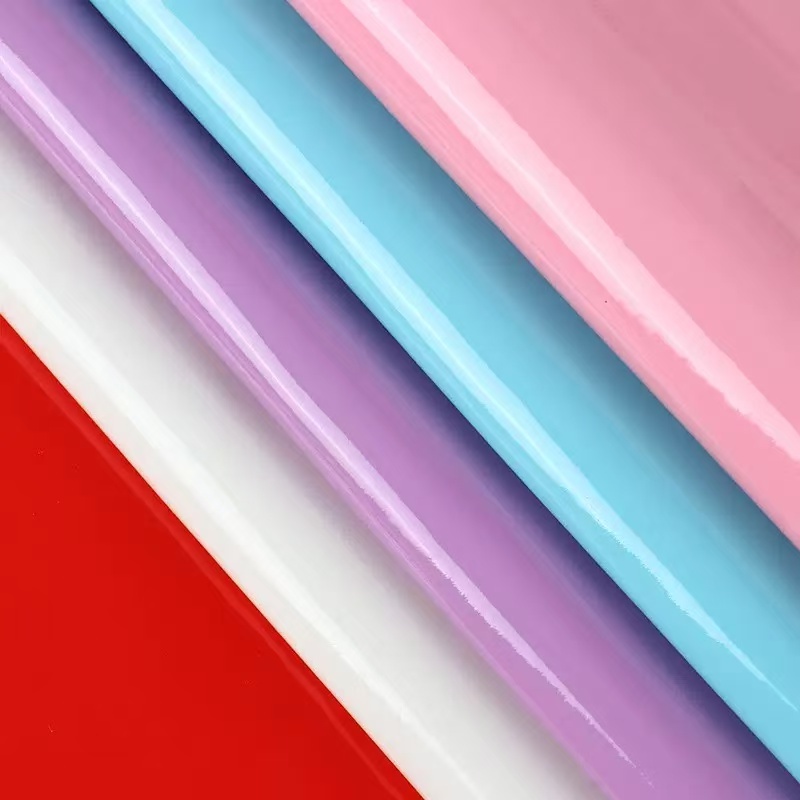
II. Key Advantages of Varnish Leather
Varnish leather's unique craftsmanship gives it a series of significant advantages, especially in terms of visual effects and functionality:
1. Ultimate Luxurious Appearance:
Ultra-High Gloss: With a mirror-like shine and reflective finish, Varnish leather creates a strong visual impact and epitomizes modern, avant-garde, and luxurious style.
Smooth and Flat: The surface achieves near-perfect flatness, creating a premium feel.
Vivid and Rich Colors: The high-gloss surface reflects light better, making colors appear richer and deeper. 2. Easy to Clean and Maintain (Surface Stains):
Smooth and Non-Absorbent: The dense resin coating completely seals the leather's pores, making it difficult for liquids and dust to penetrate.
Easy to Wipe: Everyday dust, water stains, and oil stains (before they dry) can be easily wiped off with a slightly damp soft cloth, making surface maintenance very convenient.
3. Abrasion Resistance (to a certain extent):
The high hardness and high cross-linking resin coating provides surface abrasion resistance superior to that of ordinary leather (against daily friction), making it less prone to pilling and scratching (but susceptible to scratches from sharp objects).
4. Good Dimensional Stability:
The multi-layer coating and curing process gives the leather a stronger overall appearance and resists deformation, making it particularly suitable for products that require shape retention (such as furniture, automotive interior parts, and hard bags).
5. Waterproof and Moisture-Resistant (Surface):
The sealed coating effectively prevents moisture from penetrating the substrate from the surface, providing excellent short-term water resistance (although water may still enter through long-term immersion or seams). 6. Enhance Product Quality and Value
Its unique, eye-catching appearance can significantly elevate the visual quality and premium value of end products (such as sofas, car seats, and high-end shoes and bags), satisfying consumers' pursuit of personalization and luxury.
III. Important Supplement: Balancing Advantages and Limitations
Varnish leather has significant advantages, but its limitations also stem from its craftsmanship:
Poor Breathability: The completely closed coating sacrifices the breathability of natural leather.
Harder/Cold Hand Feel: Typically harder and colder than natural or ordinary coated leather (depending on the substrate and coating thickness).
Professional Maintenance Required: Avoid strong acid and alkaline cleaners, and scratch repair is difficult.
Summary:
The essence of varnish leather craftsmanship lies in the multi-layered high-gloss resin coating and rigorous high-temperature and high-pressure polishing; both are indispensable.
Core Benefits: It offers an unparalleled luxurious mirror-like sheen, is easy to wipe clean, and has excellent surface abrasion resistance and water resistance, making it an ideal material for high-end, modern products. Applications: Varnish leather's advantages make it widely used in applications requiring high visual appeal and resistance to frequent bending, including high-end furniture (sofa upholstery, headboards), automotive interiors (seat center panels, door panels, dashboards, steering wheels), fashionable footwear (high heels, boots), luggage (handbags, wallets, hard cases), and decorative items.
When choosing Varnish leather, consider weighing its striking appearance against potential maintenance challenges and limitations in usage.
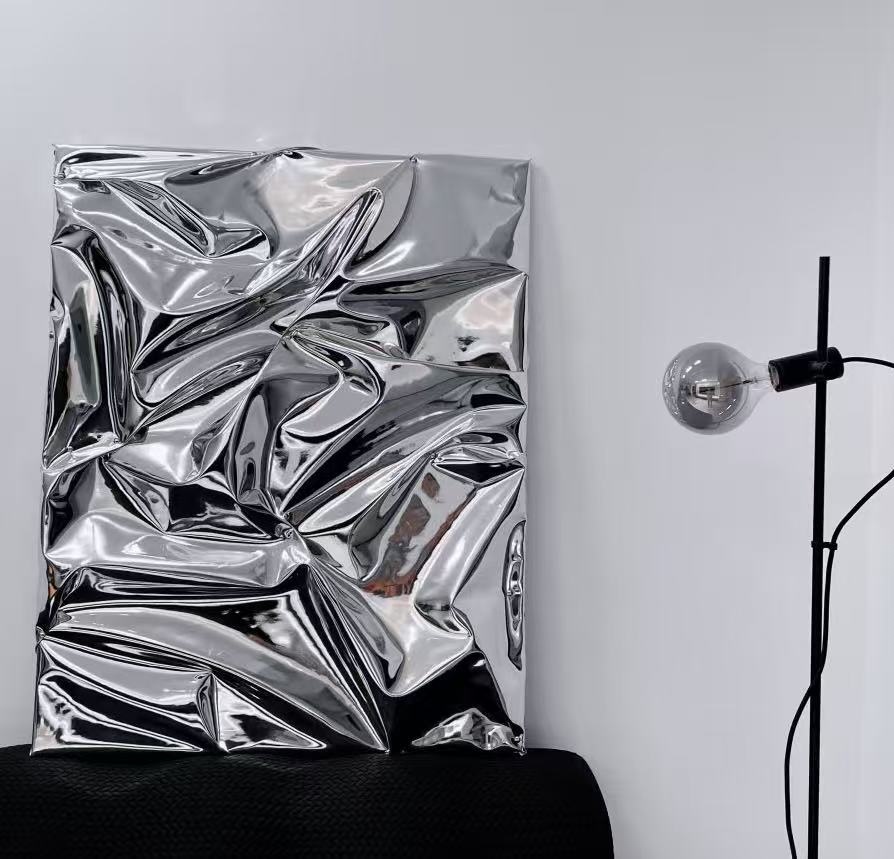
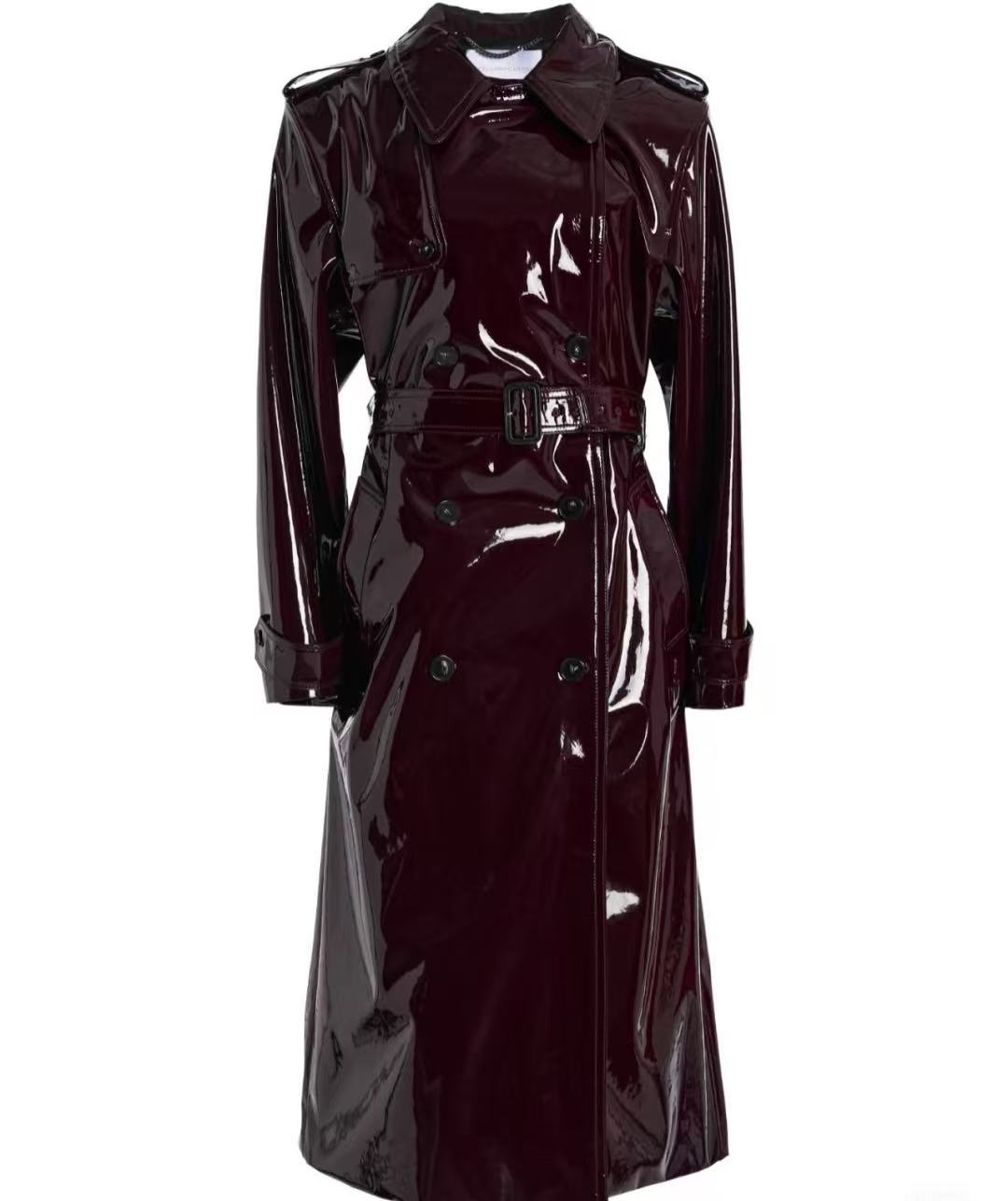

Post time: Aug-01-2025







